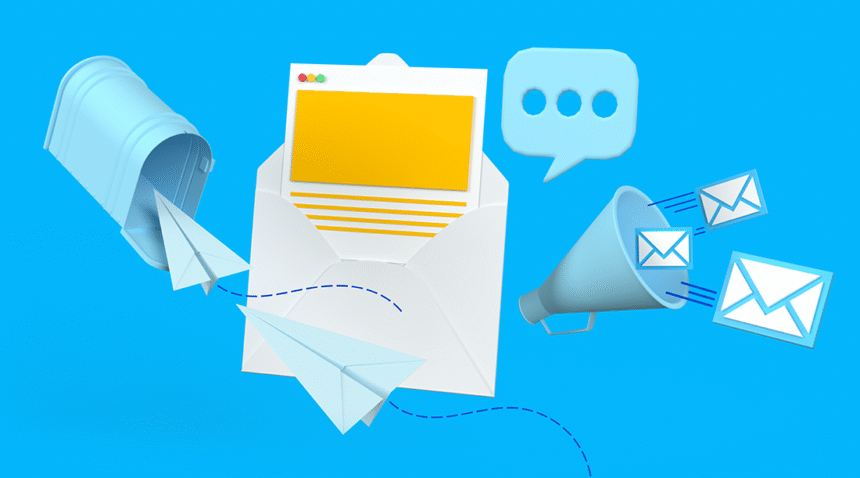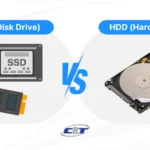Email marketing is one of the most efficient and cost-effective ways to engage with an audience, but standing out in the crowded inbox is no small feat. As the digital marketing landscape continues to evolve, marketers are constantly looking for ways to enhance their email campaign performance. The basics of email marketing, such as effective subject lines and well-designed templates, are just the tip of the iceberg. To truly optimize your email campaigns, you need to implement advanced strategies that go beyond the fundamentals.
In this article, we will explore advanced strategies for optimizing email campaign performance. These strategies focus on improving engagement, increasing click-through rates (CTR), boosting conversions, and ultimately driving better business outcomes. Whether you’re an experienced marketer or just starting to explore email marketing, these tactics will help elevate your campaigns to new heights.
The Importance of Email Campaign Optimization
Email marketing remains a vital tool for businesses of all sizes, and for good reason. Research consistently shows that email marketing provides one of the highest returns on investment (ROI) of any digital marketing strategy. According to a study by Campaign Monitor, email marketing has an average ROI of $42 for every $1 spent. That’s a remarkable figure and speaks to the power of email marketing when done correctly.
However, with such high potential returns, it’s no longer enough to send a generic email to a mass list and hope for the best. The success of an email campaign now relies on advanced tactics that leverage data, personalized content, and continual optimization.
The goal of this post is to help you move beyond the basics and unlock the true potential of your email campaigns. By employing advanced strategies that optimize various elements of your emails—such as segmentation, content personalization, testing, and performance tracking—you will be able to create campaigns that truly resonate with your audience and achieve the results you’re aiming for.
Personalization: A Powerful Tool for Engagement
One of the most important factors in optimizing email campaign performance is personalization. In a crowded inbox, emails that feel relevant to the recipient are far more likely to be opened and acted upon. Personalization can take many forms, from addressing the recipient by name to delivering content that aligns with their past behaviors or preferences.
Using Data for Personalization
The foundation of any personalized email campaign is data. By collecting and analyzing data about your subscribers, you can craft messages that are tailored to their interests and behaviors. The more you understand about your audience, the better equipped you are to create relevant content that will drive action.
There are various ways to collect and use data to personalize your email campaigns:
- Segmentation: Divide your email list into smaller groups based on characteristics such as location, purchase history, or engagement level. This allows you to send targeted messages that speak directly to the specific needs and interests of each group.
- Behavioral Data: Track how subscribers interact with your emails and website. For example, if someone clicks on a link to a specific product in an email but doesn’t make a purchase, you can send a follow-up email with a personalized discount or reminder.
- Dynamic Content: Use dynamic content to customize different sections of your emails for different audience segments. For instance, you can show different product recommendations based on the recipient’s past purchases or browsing history.
Advanced Segmentation Techniques
While segmentation is a basic personalization technique, advanced segmentation strategies can make your emails even more effective. By diving deeper into your subscribers’ behaviors, you can create highly tailored experiences that resonate more strongly with your audience.
Here are some advanced segmentation strategies you can implement:
1. Lifecycle Stage Segmentation
Understanding where a subscriber is in their customer journey is essential for delivering the right message at the right time. Different stages in the lifecycle require different types of communication. For example, new subscribers may need a welcome email, while loyal customers may appreciate exclusive offers or VIP rewards.
Consider implementing a lifecycle stage segmentation strategy, where you categorize subscribers into stages such as:
- New Subscribers: Those who recently joined your email list and may need introductory content.
- Prospects: Subscribers who have shown interest in your products but have not yet made a purchase.
- Active Customers: Subscribers who frequently purchase and engage with your brand.
- Loyal Advocates: Subscribers who have made multiple purchases and may be inclined to refer others.
By tailoring your emails to each stage, you can deliver more relevant content that drives higher engagement and conversion rates.
2. Engagement-Based Segmentation
Not all subscribers are equally engaged with your emails. Some may open every email you send, while others may rarely interact. By segmenting your list based on engagement level, you can send targeted messages that re-engage dormant subscribers or nurture your most loyal followers.
For example, you could create segments such as:
- Highly Engaged: Subscribers who regularly open your emails and click on links.
- Moderately Engaged: Subscribers who occasionally open emails but don’t click or take action.
- Inactive: Subscribers who haven’t opened any of your emails in a set period (e.g., 30 days).
For highly engaged subscribers, consider sending exclusive offers or loyalty rewards. For inactive subscribers, send a re-engagement campaign with special incentives to rekindle their interest.
Testing Personalization Elements
While personalization can significantly improve email campaign performance, it’s essential to test different personalization tactics to see which ones work best for your audience. Here are a few elements you can test:
- Personalized subject lines: Test different variations of subject lines that include the recipient’s name or other personalized details.
- Personalized content: Test emails with personalized product recommendations versus generic content to see which yields better results.
- Timing: Experiment with sending emails at different times of day or days of the week to determine when your audience is most likely to engage.
By continuously testing and optimizing your personalized emails, you’ll be able to refine your strategies and deliver the most effective content possible.
The Art of Crafting Compelling Subject Lines
The subject line is the first thing recipients see when they receive your email. It’s your opportunity to capture their attention and convince them to open the message. Without a strong subject line, even the best email content will go unseen.
While there are many tips for creating effective subject lines, advanced strategies focus on tailoring them to your audience’s preferences and testing them for optimal performance.
Best Practices for Writing Subject Lines
- Use urgency: Create a sense of urgency with phrases like “limited time” or “don’t miss out.” This can encourage recipients to open the email immediately.
- Be clear and concise: Keep your subject lines short and to the point. People are busy, and they want to know what the email is about at a glance.
- Personalize the subject line: Including the recipient’s name or a product they’ve shown interest in can make the email feel more relevant and increase open rates.
- Test multiple variations: Try A/B testing different subject lines to see which one performs best with your audience.
Leveraging A/B Testing for Subject Lines
A/B testing allows you to compare different versions of your subject lines to determine which one has the highest open rate. Test one element at a time to ensure accurate results, and consider testing:
- The tone: Test whether a friendly, conversational tone or a more formal, professional tone resonates better with your audience.
- The value proposition: Experiment with subject lines that emphasize the benefit of opening the email, such as a special offer or an informative resource.
The Psychology Behind Subject Lines
Understanding the psychology behind why people open emails can also help you craft more effective subject lines. People are often motivated by emotions, so consider using subject lines that trigger emotions such as curiosity, excitement, or fear of missing out (FOMO).
For example:
- Curiosity: “You won’t believe what’s inside”
- Excitement: “We’ve got something special for you”
- FOMO: “Last chance for 30% off!”
Content Optimization for Higher Engagement
Once the subject line has done its job, the content within the email must follow through. The email body is where you deliver value, build trust, and encourage recipients to take action.
Here are several strategies for optimizing your email content:
1. Deliver Value Quickly
Recipients have limited time, so it’s important to get straight to the point. The first sentence or two of your email should clearly state what value the recipient will receive by reading further. Whether it’s an exclusive offer, helpful information, or an invitation to a webinar, make sure the value is immediately apparent.
2. Clear and Compelling CTAs
A call to action (CTA) is the part of the email where you tell recipients what you want them to do next. Whether it’s to click a link, make a purchase, or sign up for an event, your CTA should be clear, concise, and compelling.
Use action-oriented language that creates a sense of urgency or exclusivity, such as “Claim Your Offer,” “Join the Webinar,” or “Get Started Today.” The CTA should also be easy to find, so consider placing it above the fold or using buttons to make it stand out.
3. Focus on Mobile Optimization
More than half of emails are now opened on mobile devices, so it’s essential to optimize your email content for mobile users. This includes using responsive design, ensuring buttons are large enough to click, and keeping the text concise and easy to read on smaller screens.









